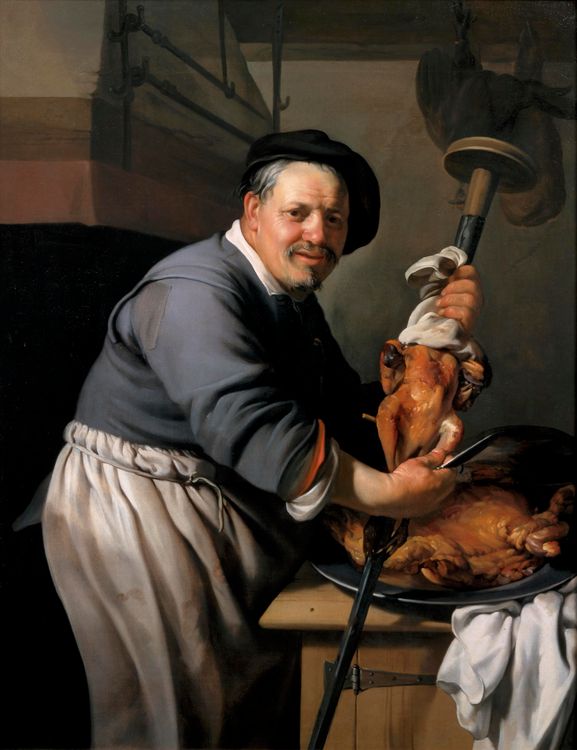
Hendrick Bloemaert
A love for art, infused with Italian flair: Hendrick Bloemaert certainly possessed it. He was a poet, translator, and, like his father, a painter. He was ambitious and passionate. So, it's certain that Bloemaert knew how enjoyable and stimulating art could be; he was familiar with the fun part of art.
The Life of Hendrick Bloemaert
Hendrick Bloemaert was born in 1601 in Utrecht. His passion for art was ingrained in him from a young age because his father was Abraham Bloemaert, a renowned Utrecht painter. Abraham Bloemaert was the mentor of Gerard van Honthorst, and he would also introduce his own son to the world of painting. Young Hendrick would have likely been exposed to artists frequently within his own home.
The Utrecht painters of this era maintained close ties with Italy. Italy was ahead of the Northern regions in terms of artistic advancements, and Italian artists had mastered techniques that were still undiscovered in the North. Not only did Father Bloemaert send his apprentice Gerard van Honthorst to Italy, but he also sent his son Hendrick. In 1627, Hendrick Bloemaert spent time in Rome.
In his hometown of Utrecht, Hendrick Bloemaert, possibly with the assistance of his father, became a central figure in the cultural scene. Artists were united under the St. Luke's Guild, and Hendrick Bloemaert held important positions within the guild. He had a broad cultural interest; he even translated an Italian comedy into Dutch, thanks to his time in Rome, where he also acquired proficiency in the Italian language.
Hendrick Bloemaert was an art enthusiast and a promoter of cultural developments in his city. However, he was also an artist himself. Although he gained appreciation for his own works, he could never emerge from the shadows of the great painters of his time, including his father. He passed away in 1672.
Works of Hendrick Bloemaert
Hendrick Bloemaert drew a lot of inspiration from his time in Italy. Some suggest that he may have been Catholic (which seems to align with how he recorded his marriage). There is indeed a certain southern atmosphere in Bloemaert's work, characterized by vivid colors and warmth, reflecting his enthusiasm.
From a technical perspective, Hendrick Bloemaert's work falls behind that of his contemporaries. He clearly had limitations as a creative artist. This also led to his work not being exceptionally appreciated in later centuries. Nevertheless, in the context of the Utrecht artistic movement with its Italian influences, his work has significance in Dutch art history.
Hendrick Bloemaert & the fun part of art
Art can be appreciated in many ways. Those who admire technical mastery will likely favor artists like Gerard Dou and Johannes Vermeer over the more modest Hendrick Bloemaert. However, his genre pieces do tell a captivating story. They allow us to experience what the 17th century was like, how artists worked during that time, and how they reacted to society. This is why there is a place for him in the virtual museum of the fun part of art.
